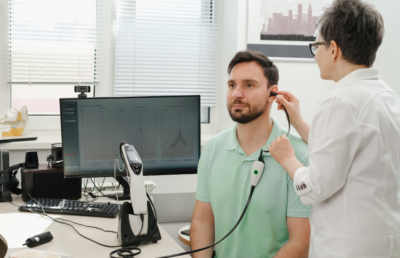Today we aren’t voting for our favorite ice cream flavor or our favorite new movie. On this cold dreary day in Chicago, I am dreaming about sitting in the sun eating some Jeni’s ice cream in Grandview, Ohio as my friends and I used to do to escape graduate school. Instead I am discussing a much hotter topic–ear wax!
Now you are probably wondering why discuss food followed by ear wax….sorry I just really want summer in Chicago!
Onto more important things…Ear Wax! Many people do not like cerumen (aka ear wax) but if you are a nerdy audiologist like myself you see the importance for it and why our bodies even make it. Why do we need ear wax you may wonder!?
1. Cerumen provides lubrication (ie oil) to keep the ear canal from getting dry. In Asian decent individuals, oil is not produced and their cerumen is flakier and more white in color. There are anthropology studies that look at cerumen and how different ethnic groups have different cerumen make-up. I’m sure you did not know that!
2. Cerumen provides protection against bugs! What bugs do you ask–both kinds. Cerumen has protective agents to keep literally bugs from climbing into the ear canal. If they do, the ingredients in cerumen will kill them so that they do not get to the ear drum and cause damage. Cerumen, more importantly, protects the ear canal from bacteria and fungi that can cause external ear infections. Swimmers are at risk for external otitis media because the chlorine and water does not allow the ear canal to produce wax.
Some cerumen is not bad. Audiologists do not want patients to experience a cerumen impaction so below are some guidelines on proper cerumen management.
Do NOT use Q-tips. Q-tips can push the cerumen further into the ear causing an impaction or infection. I have seen cases of the Q-tip abrading the ear canal or the worse, puncturing the ear drum causing extreme pain and hearing loss.
Instead of using Q-tips people will use ear candling. 
What is the effectiveness of this? A few studies have been done to show no scientific benefit and more issues with it rather than help. I strongly advise all my patients and friends from this as well.
In general, cerumen will naturally migrate out on its own as the epithelial skin layer grows. This is the best method. If your ear produces a lot of cerumen, you have extremely hairy ears, or are wearing ear plugs etc…, the risk of impaction may increase. We also see this in older patients because their bodies do not produce as much oil and so the cerumen has a tendency to be hard and not naturally excrete.
Debrox is a wax softening agent that can be bought anywhere and will help soften the wax for easier removal. Another at home remedy can be peroxide mixed with room temperature water. Pour it into the ear canal and then rinse after bubbling with more room temperature water. Both Debrox and peroxide should be done for at least three days in order to remove the impaction. Many audiologists will also remove cerumen via either a curette, water, or suction tools.
Have a wonderful waxy day and hopefully you learned a thing or two…





